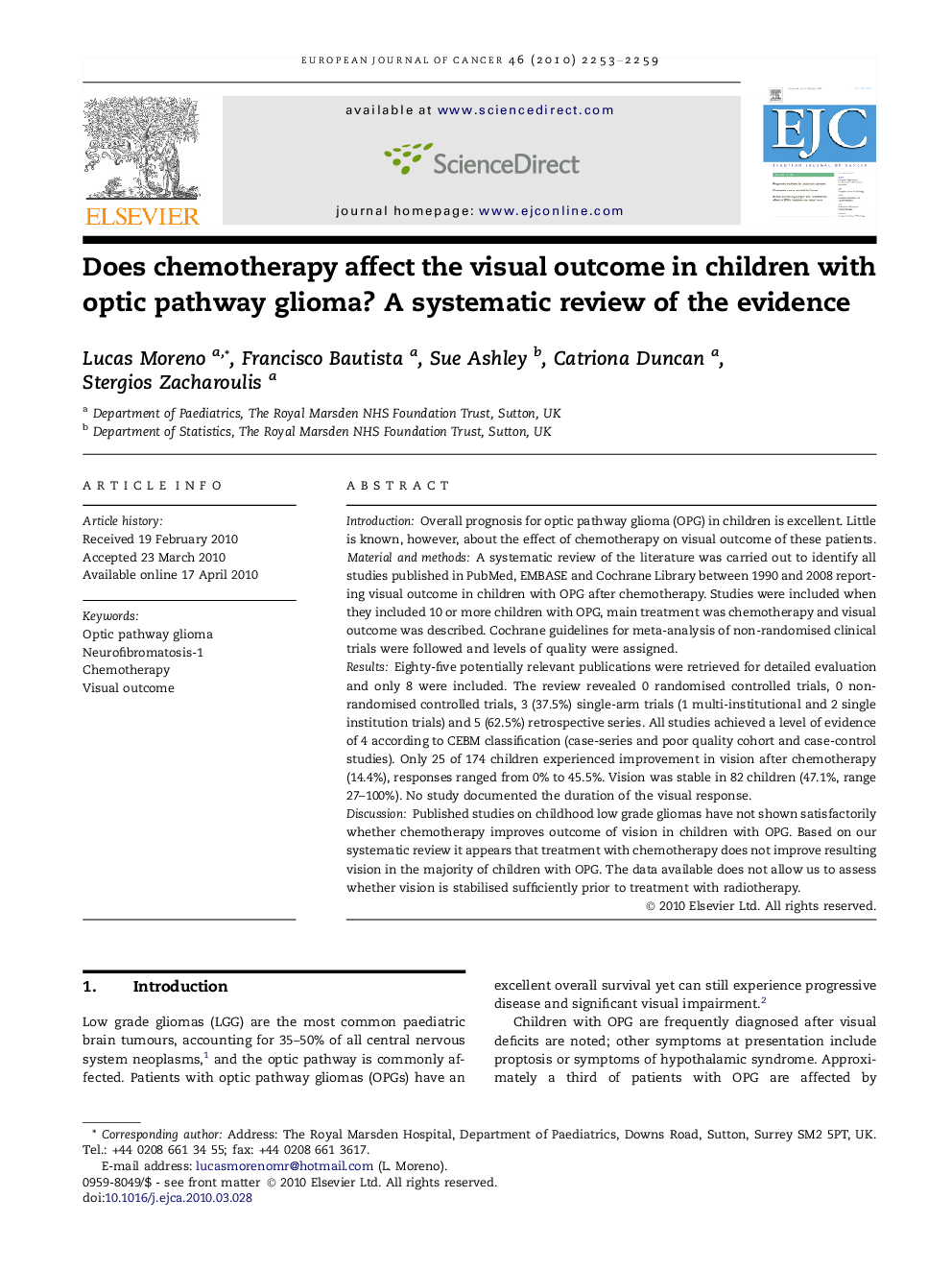| Article ID | Journal | Published Year | Pages | File Type |
|---|---|---|---|---|
| 2123295 | European Journal of Cancer | 2010 | 7 Pages |
IntroductionOverall prognosis for optic pathway glioma (OPG) in children is excellent. Little is known, however, about the effect of chemotherapy on visual outcome of these patients.Material and methodsA systematic review of the literature was carried out to identify all studies published in PubMed, EMBASE and Cochrane Library between 1990 and 2008 reporting visual outcome in children with OPG after chemotherapy. Studies were included when they included 10 or more children with OPG, main treatment was chemotherapy and visual outcome was described. Cochrane guidelines for meta-analysis of non-randomised clinical trials were followed and levels of quality were assigned.ResultsEighty-five potentially relevant publications were retrieved for detailed evaluation and only 8 were included. The review revealed 0 randomised controlled trials, 0 non-randomised controlled trials, 3 (37.5%) single-arm trials (1 multi-institutional and 2 single institution trials) and 5 (62.5%) retrospective series. All studies achieved a level of evidence of 4 according to CEBM classification (case-series and poor quality cohort and case-control studies). Only 25 of 174 children experienced improvement in vision after chemotherapy (14.4%), responses ranged from 0% to 45.5%. Vision was stable in 82 children (47.1%, range 27–100%). No study documented the duration of the visual response.DiscussionPublished studies on childhood low grade gliomas have not shown satisfactorily whether chemotherapy improves outcome of vision in children with OPG. Based on our systematic review it appears that treatment with chemotherapy does not improve resulting vision in the majority of children with OPG. The data available does not allow us to assess whether vision is stabilised sufficiently prior to treatment with radiotherapy.
